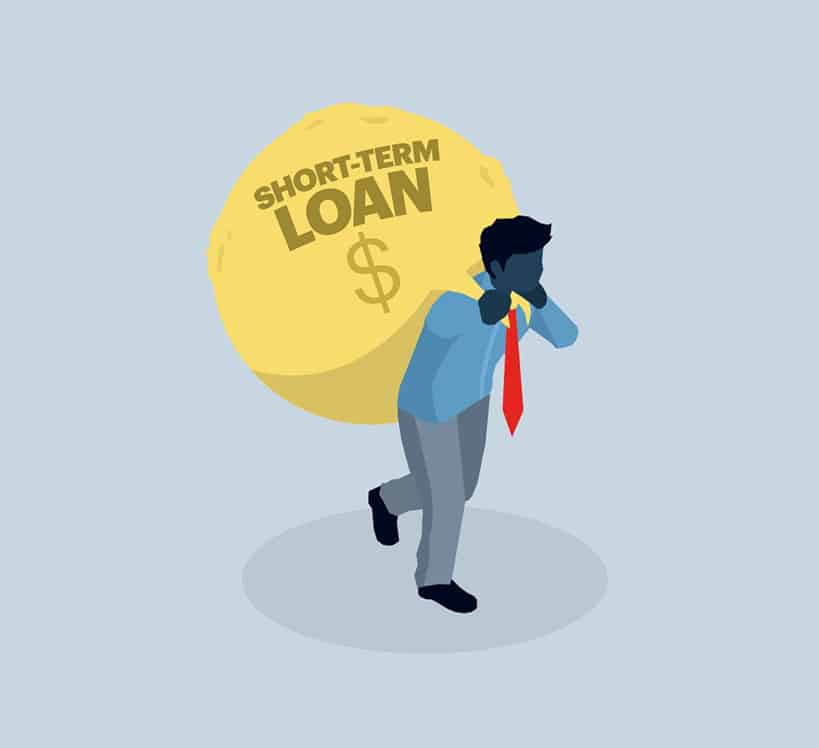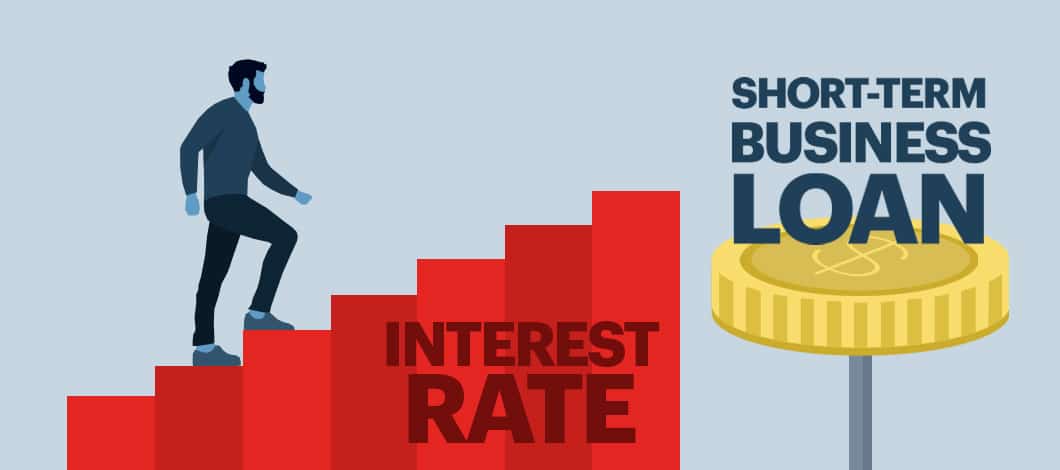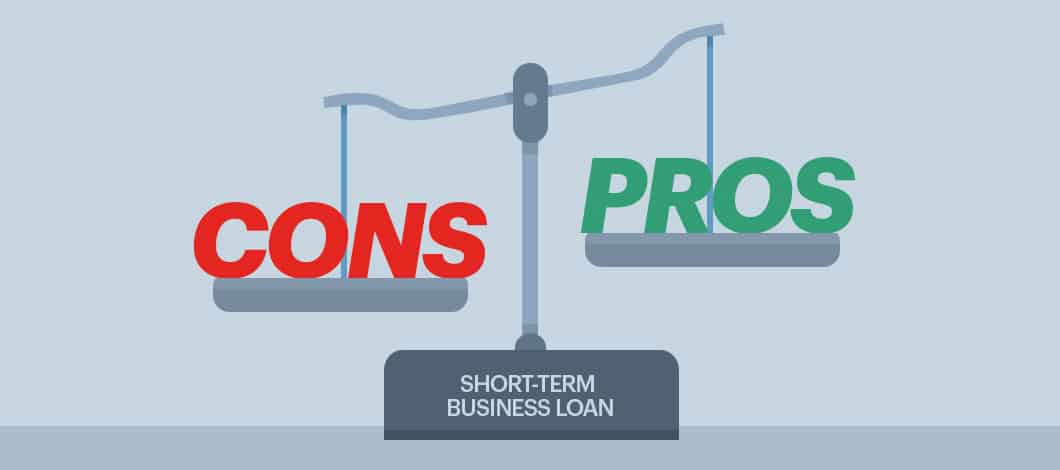Why do short-term loans have higher interest rates? And are they worth the extra cost?
We’ll explain short-term financing to help you decide whether it’s right for you. First, we’ll define what short-term loans are and what types are available. Then we’ll compare the differences between short-term and long-term financing. This will help us understand why short-term loan interest rates are higher and how lenders go about setting rates. Finally, we’ll consider the pros and cons of short-term loans and when it makes sense to pay the extra fee for short-term financing.
What Are Short Term Loans?
Business short-term loans are financing products that have repayment terms with a typical range of 3 to 18 months. They normally are available in amounts up to $500,000. They may have interest rates of 10% and up. They have relatively easy qualifying criteria and fast funding turnaround.
For some short-term loan products, you may qualify if you’ve been in business for 1 year or longer, you generate at least $75,000 in annual revenue and you have a personal credit score of 540 or higher.
What Are the Different Types of Short-Term Loan Products?
Short-term loan products come in a variety of forms. These include:
- Term loans: loans with repayment schedules spread out over a designated interval at fixed or variable interest rates
- Business lines of credit: accounts with set limits you may borrow against at interest, often with the option of borrowing funds again after repayment
- Invoice financing: cash extended using your unpaid invoices as collateral
- Merchant cash advances: cash extended using projected sales as collateral
Term loans and business lines of credit may be used by most businesses. Invoice factoring is designed for businesses that rely on extending credit to customers, while merchant cash advances are often used by companies that require financing for inventory purchases as well as businesses that rely on credit.
What’s the Difference Between Short-Term and Long-Term Loans?
Characteristics of short-term loan products include terms of 3-18 months, amounts up to $500,000 and interest rates of 10% and higher. In contrast, long-term loans have term lengths measured in years rather than months. Some business term loans fall into the range of 1 year to 5 years and can be considered medium-term loans, while others used for purposes such as business expansions and mortgages may have terms as long as 25 years.
Long-term loans are used for long-term investments and come in higher amounts than short-term loans. For example, 7(a) loans from the Small Business Administration are available in amounts up to $5 million.
Because interest accumulates over a longer time with term loans, and because the interest is being applied to a larger principal amount, lenders can afford to extend them at lower rates than short-term loans. For example, 7(a) loans are capped at prime rate plus 2.25% for terms up to 7 years and prime plus 2.75% for longer terms.
Why Are Short-Term Loan Interest Rates Higher?
Short-term loans have higher interest rates because they yield less interest for lenders and they carry a higher risk of loan default. Because short-term loans generally come in lower amounts than long-term loans and because the interest repayments are spread out over years, the lender stands to make a profit even at a lower interest rate. Even though the rate may be lower for long-term loans, the amount of interest that accumulates often is higher than that for short-term loans.
Another reason short-term loans have higher rates is that the longer repayment term puts the lender at greater risk of having the borrower default. More things can happen to borrowers over a long period of time, raising the risk of the borrower going out of business, going bankrupt or otherwise becoming unable to repay their loan.
Moreover, because short-term loans are easier to qualify for than long-term loans, borrowers often have lower credit ratings. This further increases the risk of default for lenders.
However, although these factors tend to promote higher interest rates for short-term loans, not all short-term loans have especially high interest rates. Low-interest short-term loans may be available to customers with exceptional credit.
How Do Lenders Set Short-Term Loan Interest Rates?
Lenders consider two main types of factors when setting interest rates on loans:
- Market conditions
- Borrower credit risk
The market conditions which affect interest rates include a number of factors. The Federal Reserve sets the federal funds rate, which establishes the rate at which financial institutions lend reserve funds to each other. This in turn affects the prime rate, the interest rate financial institutions use as an index to set interest rates for ideal consumers with strong credit. The prime rate sets the bar for the interest policies of individual lenders. Other market factors such as inflation rates and stock market trends can affect interest rates.
In addition to these market conditions, lenders factor in the creditworthiness of individual applicants. For business loans, this involves consideration of variables such as:
- Time in business
- Revenue level
- Personal and business credit score
- Previous credit history with the lender
- How much the applicant wants to borrow
- What they want the funds for
- The length of the loan term
- The repayment schedule
Based on such considerations, lenders may adjust interest rates for individual borrowers.
What Are the Advantages and Disadvantages of Short-Term Financing?
Short-term financing appeals to some borrowers for a number of reasons:
- Short-term loans are available for smaller amounts than long-term loans, which can result in lower total interest payments even though rates are higher
- Short-term financing is easier to qualify for
- The simpler qualifying process can make funds available more quickly
- Short-term loans can be repaid quickly
- For businesses that can use unpaid invoices or projected inventory sales as collateral, short-term financing can help cover temporary cash-flow gaps
On the other hand, short-term financing has a few notable disadvantages. These include:
- Interest rates tend to be higher for short-term financing products
- For borrowers seeking higher loan amounts, available funds may be too limited
- Some short-term loan products such as invoice financing and merchant cash advances may require frequent repayments on a daily or weekly basis, which can cut into the borrower’s cash flow
Whether these drawbacks outweigh the benefits of short-term financing will depend on the needs of the individual borrower.
When Does It Make Sense to Pay Short Term Loan Interest Rates?
Despite potentially higher interest rates, short-term loan products may make sense under a number of scenarios:
- The amount of financing you need doesn’t require a long-term loan
- The amount of interest you’d pay on a short-term loan is comparable to the amount of interest you’d pay on a long-term loan after loan amounts and repayment schedules are taken into account
- You can qualify for a short-term loan product more easily than you could qualify for a long-term loan
- You have unpaid invoices or projected sales you can use as collateral
- You need financing more quickly than a long-term loan application process would allow
- You want a loan you can repay rapidly
If one or more of these conditions apply to you, short-term financing may be beneficial to you. Consult your financial advisor to determine whether short-term financing or another loan option would make more sense for your specific situation.
Choose the Financing Option That’s Right for You
Short-term loan products generally have terms from 3-18 months, available amounts up to $500,000, interest rates of 10% and more and relatively easy qualifying criteria.
Types of short-term loan products include term loans, business lines of credit, invoice financing and merchant cash advances. These products have shorter terms and higher interest rates than long-term loans because of the lower interest generated for the lender as well the higher risk of default. Lenders set interest rates based on both market conditions and the evaluation of borrower credit risk.
The higher interest rates associated with short-term loans may be worth paying if you have immediate financing needs, you need funds in smaller amounts or you have difficulty qualifying for long-term loans. To help you decide which financing option is right for you, take a few minutes to fill out our free, no-obligation prequalifying application and see what types of loan options you may be eligible for.






